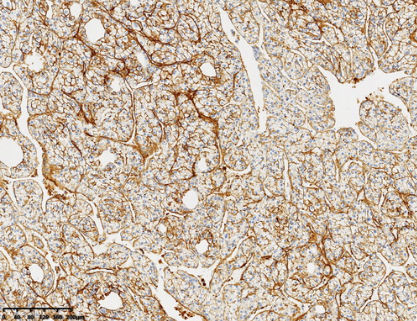B cell lineage marker
B cells are white blood cells that, along with T cells, form the adaptive immune system. They are responsible for antibody production and antigen-presenting to the T cells to generate an effective immune response and contribute to the generation of long-term immunological memory. B cell development goes through several stages, each having a different structure and function; the rearrangement in immunoglobulin loci in the B cell development stage results in the generation and expression of different receptors. Each B cell has a B cell antigen receptor with unique specificity [1]. A series of events leads to B cell activation and the formation of plasma cells. The B cell development and maturation is a complex process; disruption in B cell development or function can cause various autoimmune and immunodeficiency diseases, including melanomas. Thus, understanding the B cell subtype is important for vaccines and targeted therapies.
B-cell lineage marker antibody panel -now customizable
B cell Development
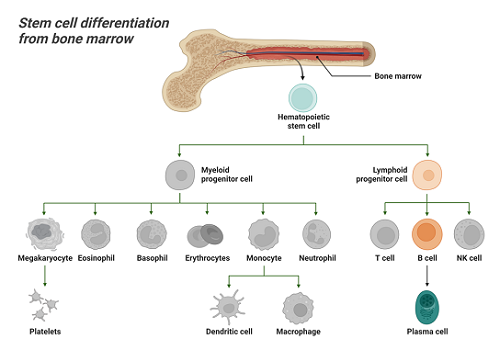
Fig 1. Stem cell differentiation from bone marrow [6].
B cells differentiate from pluripotent hematopoietic stem cells (pHSC) in the bone marrow and fetal liver under different stimuli [2]. The B cell development process starts when multipotent progenitor cells migrate into the fetal liver and the bone marrow. These progenitor cells differentiate into lymphoid progenitor (pro-B cell) cells that give rise to common lymphoid-2 progenitor (LCA-2), the first stage of immature B cells. B cells development depends on BM stromal cells; LCA-2 receives signals from the BM cells for B cell development, including IL-7, Flt3-L, PU.1, IKAROS, EA2, EBF, PAX5, IRF8, etc. [1,2,3,4,5].
B cells go through a series of development stages in the bone marrow and develop antigen specificity. It is marked as one of the most critical steps in B cell development. Each B cell has a B cell antigen receptor (BCR) with unique specificity. The B cells undergo rearrangement of Ig gene segments for broad selectivity and specificity of the adaptive immune system. Ig molecules are composed of 2 identical heavy chains and two light chains. The heavy and light chain loci are composed of different gene elements: variable (V), diversity (D) segment (for heavy chain gene only), constant (C) region, and joining (J). B cell proliferation, differentiation, and gene rearrangement give rise to different B cell subsets.
B cell maturation
Immature B cells, or B cell precursors, exit the bone marrow after their development to enter the peripheral blood circulation as transitional B cells, which can migrate to various secondary lymphoid tissues, such as lymph nodes or spleen. In some cases, some immature B cells remain in the bone marrow to transform into memory B cells. Transitional B cells are the intermediate B cells between immature and mature B cells; they provide a large pool of B cells with diverse antigen specificity. Three groups of transitional B cells, T1, T2, and T3, are classified based on their cell surface marker expression and function. Transitional B cell maturation occurs in the spleen. Transitional B cells undergo a selection process, where they are tested for their ability to bind to self-antigens and antigens. Those that bind poorly or bind to self-antigens are eliminated to avoid autoimmunity. In contrast, those that bind well to antigens undergo further differentiation and maturation into mature, functional B cells: Follicular(FO), marginal (MZ), and germinal center (GC) B cells.
Key CD markers expressed in B cells
There are several markers for studying different stages of B cell differentiation. View the list all markers below:
Our experts have chosen the key markers to study the entire B- cell lineage. The markers and their function is given below:
| Name | Function | B Cell Subtype Expression | Localization |
|---|---|---|---|
| CD10 | CD10 regulates several cellular processes, including cell adhesion, cell activation, and signal transduction, | Pre B cell, Immature B cell, GC B cell | Cell membrane |
| CD19 | Co-receptor for the B cell receptor (BCR) complex and is essential for B cell signaling and activation. | Pan B cell | Cell membrane |
| CD20 | Functions as a membrane-embedded Ca2+ channel, regulates B cell activation and proliferation | Mature B cells, Naïve B cells, GC B cell | Cell membrane |
| CD21 | Acts as a receptor for the C3d and epstein-barr virus, interacts with CD19 to induce B cell inflammatory response | Mature B cell, Naïve B cell, Memory B cell, MZ B cell | Cell membrane |
| CD22 | Acts as a negative regulator of B cell activation and signaling by recruiting intracellular phosphatases to the B cell receptor (BCR) complex, reducing BCR signaling and activation | Mature B cell, Pro B cell, Naïve B cell | Cell membrane |
| SDC1 | Binds to extracellular matrix compartments | Plasma Cell | Cell membrane |
Why study these CD markers for B cell lineage?
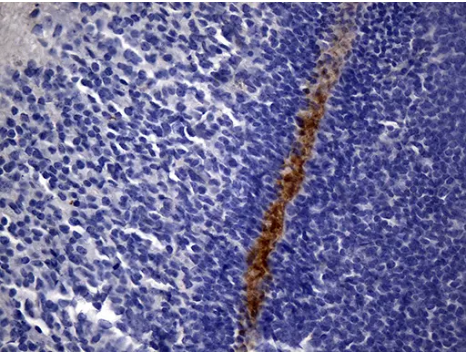
CD10
CD10, a common acute lymphoblastic leukemia antigen (CALLA), is a surface protein expressed on various cells, including B cells. CD10 is expressed on a specific subset of B cells, particularly early B cell precursors, including pre-B cells and immature B cells. CD10 expression is regulated during B cell maturation, and its expression decreases as B cells mature. This makes CD10 a valuable marker for tracking B cells’ developmental progression and distinguishing between different stages of B cell maturation. In addition to its role as a B cell lineage marker, CD10 has been implicated in several cellular processes, including cell adhesion, cell activation, and signal transduction, making it a valuable target for the development of therapeutic agents for the treatment of B cell-related diseases, such as B cell lymphoma.
Antibodies Proteins Plasmids view all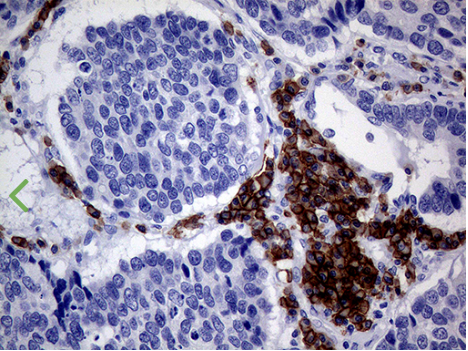
CD19
CD19 acts as a co-receptor for the B cell receptor (BCR) complex and is essential for B cell signaling and activation. CD19 is also targeted for treating B-cell-related diseases, such as non-Hodgkin lymphoma and chronic lymphocytic leukemia. CD19-directed immunotherapies, such as chimeric antigen receptor (CAR) T cell therapy, have been developed to treat these diseases by targeting and eliminating CD19-expressing B cells.
Antibodies Proteins Plasmids view all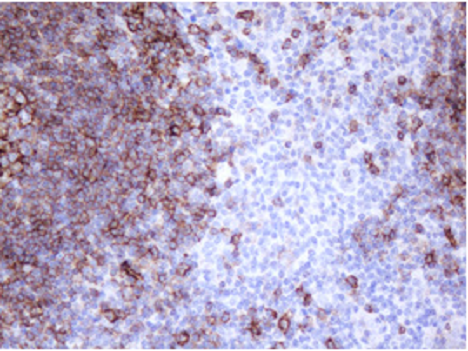
CD20
CD20 is a surface protein expressed on a specific subset of B cells, specifically mature B cells and a subset of pre-B cells. CD20 is expressed on pre-B cells, immature B cells, and mature B cells but not on plasma or memory B cells. CD20 is involved in several cellular processes in B cells, including regulating B cell activation and proliferation. It is also targeted for treating several B cell-related diseases, such as non-Hodgkin lymphoma, chronic lymphocytic leukemia, and rheumatoid arthritis. CD20 is often used as a marker to distinguish B cells from other cell types. Its expression is commonly used to monitor the progression of B cell-related diseases and the efficacy of B cell-directed therapies. Anti-CD20 are frequently being used in the treatment of B cell-related tumors.
Antibodies Proteins Plasmids view all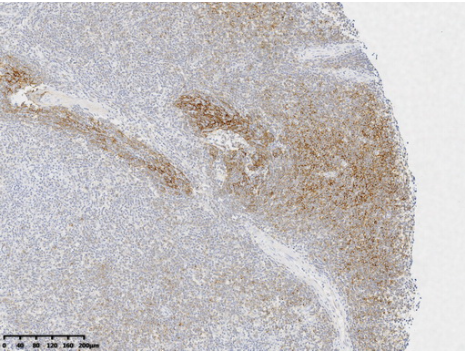
CD21
CD21 is involved in several cellular processes, including the activation and regulation of B cells. Specifically, CD21 acts as a receptor for the C3d component of complement, which plays a role in the regulation of the adaptive immune response by facilitating the interaction between B cells and T cells. The expression of CD21 on B cells is regulated during B cell maturation, and its expression increases as B cells mature from immature B cells into mature B cells. This makes CD21 a useful marker for tracking B cells’ developmental progression and distinguishing between different stages of B cell maturation.
Antibodies Proteins Plasmids view all
CD22
CD22 acts as a negative regulator of B cell activation and signaling by recruiting intracellular phosphatases to the B cell receptor (BCR) complex, reducing BCR signaling and activation. The expression of CD22 on B cells is regulated during B cell maturation, and its expression increases as B cells mature from immature B cells into mature B cells. This makes CD22 a valuable marker for tracking B cells’ developmental progression and distinguishing between different stages of B cell maturation.
Antibodies Proteins Plasmids view all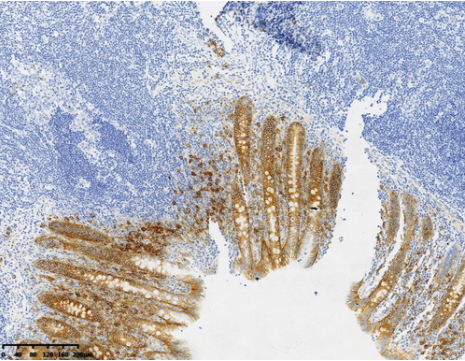
SDC1
Syndecan 1 (Sdc1) is a transmembrane heparan sulfate proteoglycan expressed on the surface of various cell types, including B cells. In B cells, SDC1 is involved in regulating B cell activation and signaling. It acts as a coreceptor for the B cell receptor (BCR) complex and modulates BCR-mediated signaling and activation. SDC1 also regulates B cell adhesion and migration and regulates B cell survival and apoptosis. The expression of SDC1 in B cells is regulated during B cell maturation, and its expression is increased in mature B cells compared to immature B cells. This suggests that SDC1 may play a role in the differentiation of B cells and may be a valuable marker for tracking the developmental progression of B cells.
Antibodies Proteins Plasmids view allB cell markers
| Gene | Marker Type | Localization |
|---|---|---|
| BCL2 | Memory B, Plasma Cell | Nucleus, Mitochondria |
| BCL6 | Plasma cell | Nucleus |
| CD19 | Pan B cells | Cell Membrane |
| CD22 | Mature B, Pro B, Naïve | Cell Membrane |
| CD24 | Pan B cells, Breg | Cell Membrane |
| CD27 | B1, Memory B, Plasma cell, Plasmablast, Breg | Cell Membrane |
| CD34 | Pro B cell, Pre B cell | Cell Membrane |
| CD38 | Pro B cell, Pre B cell, Immature B, GC, Plasmablast, Plasma cell, Breg | Cell Membrane |
| CD40 | Pan B cells | Cell Membrane |
| CD5 | B1, Immature B, Breg | Cell Membrane |
| CD53 | Immature B, Naïve, Memory B | Cell Membrane |
| CD69 | Other | Cell Membrane |
| CD72 | Pan B cells | Cell Membrane |
| CD80 | Memory B, Plasmablast, Activated B | Cell Membrane |
| CD86 | Activated B | Cell Membrane |
| CD93 | Transitional, Plasmablast, Plasma cell (mouse) | Cell Membrane |
| CD21 | Mature B, Naïve, Memory B, MZ | Cell Membrane |
| CD95 | GC, Memory B, Activated B | Cell Membrane |
| CD23 | Activated B, Mature B, Naïve | Cell Membrane |
| CD307d | Atypical Memory B | Cell Membrane |
| CD11c | Other | Cell Membrane |
| CD9 | Pre B cell, Immature B, GC | Cell Membrane |
| CD19 | Mature B, Naïve, GC | Cell Membrane |
| CD72 | Memory B | Cell Membrane |
| CD45 | Immature B, Naïve, Memory B, Plasma cell, GC | Cell Membrane |
| SDC1 | Plasma cell | Cell Membrane |
| CD43 | B1 | Cell Membrane |
| CD71 | Breg (human), Memory B | Cell Membrane |
References
- Tobón, G.J., Izquierdo, J.H. and Cañas, C.A., 2013. B lymphocytes: development, tolerance, and their role in autoimmunity—focus on systemic lupus erythematosus: autoimmune diseases, 2013.
- Melchers, F., 2015. Checkpoints that control B cell development. The Journal of clinical investigation, 125(6), pp.2203-2210.
- Bonilla FA, Oettgen HC. Adaptive immunity. J Allergy Clin Immunol. 2010 Feb;125(2 Suppl 2):S33-40. doi: 10.1016/j.jaci.2009.09.017. Epub 2010 Jan 12. PMID: 20061006.
- M. Fuxa and J. A. Skok, “Transcriptional regulation in early B cell development,” Current Opinion in Immunology,vol.19,no. 2, pp. 129–136, 2007
- T.W. Lebien and T.F. Tedder, “B lymphocytes: how they develop and function,” Blood,vol. 112,no.5,pp. 1570–1580,2008
- Adapted from “Stem cell differentiation from bone marrow”, by BioRender.com (2023). Retrieved from https://app.biorender.com/biorender-templates
- Mishra D, Singh S, Narayan G. Role of B Cell Development Marker CD10 in Cancer Progression and Prognosis. Mol Biol Int. 2016;2016:4328697. doi: 10.1155/2016/4328697. Epub 2016 Nov 14. PMID: 27965895; PMCID: PMC5124668.
- Wang K, Wei G, Liu D. CD19: a biomarker for B cell development, lymphoma diagnosis and therapy. Exp Hematol Oncol. 2012 Nov 29;1(1):36. doi: 10.1186/2162-3619-1-36. PMID: 23210908; PMCID: PMC3520838.
- Pavlasova G, Mraz M. The regulation and function of CD20: an "enigma" of B-cell biology and targeted therapy. Haematologica. 2020 Jun;105(6):1494-1506. doi: 10.3324/haematol.2019.243543. PMID: 32482755; PMCID: PMC7271567.
- Nielsen CH, Fischer EM, Leslie RG. The role of complement in the acquired immune response. Immunology. 2000 May;100(1):4-12. doi: 10.1046/j.1365-2567.2000.00009.x. PMID: 10809953; PMCID: PMC2326995.
- Clark EA, Giltiay NV. CD22: A Regulator of Innate and Adaptive B Cell Responses and Autoimmunity. Front Immunol. 2018 Sep 28;9:2235. doi: 10.3389/fimmu.2018.02235. PMID: 30323814; PMCID: PMC6173129.
- Sanderson RD, Lalor P, Bernfield M. B lymphocytes express and lose syndecan at specific stages of differentiation. Cell Regul. 1989 Nov;1(1):27-35. doi: 10.1091/mbc.1.1.27. PMID: 2519615; PMCID: PMC361422.






























































































































































































































































 Germany
Germany
 Japan
Japan
 United Kingdom
United Kingdom
 China
China





